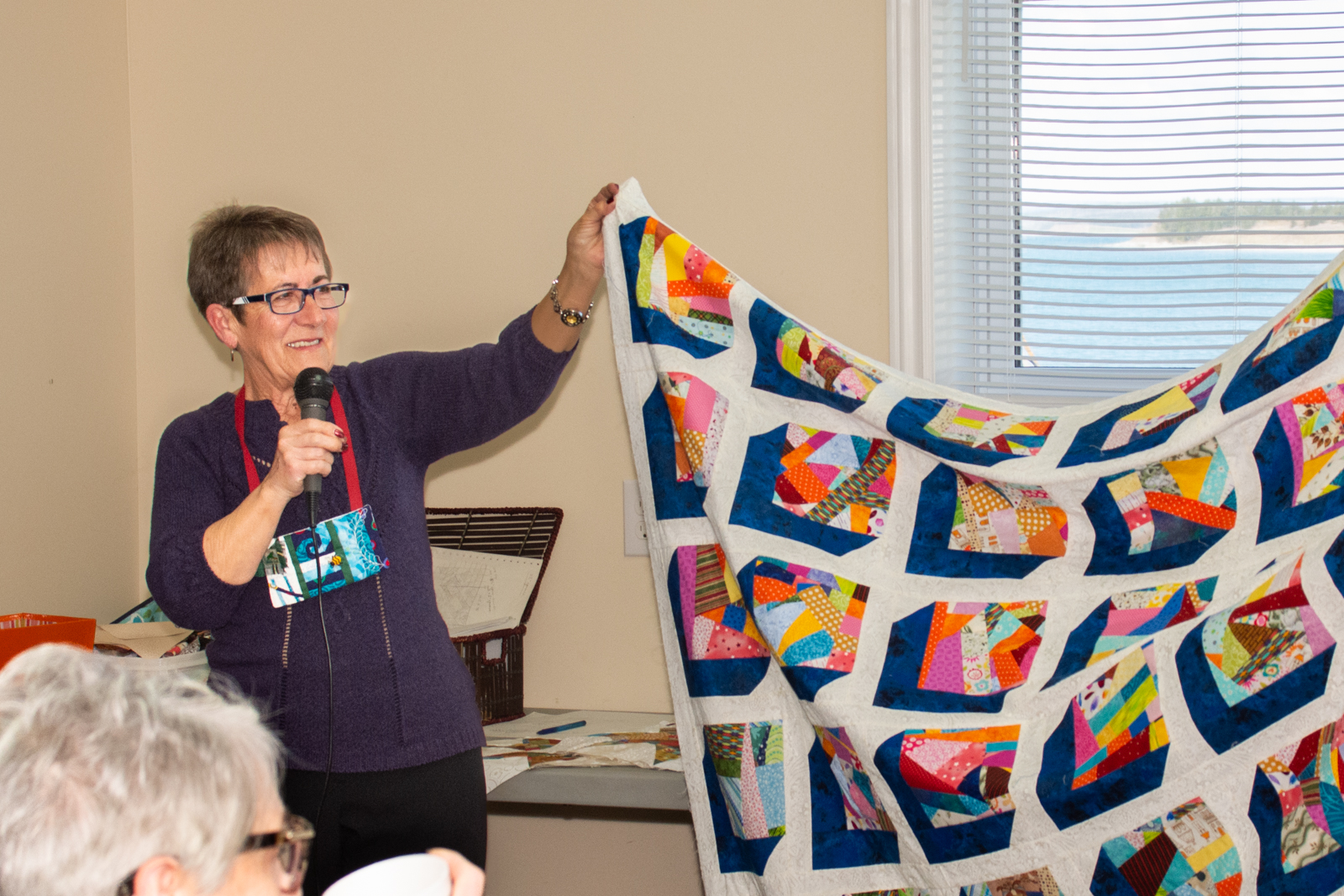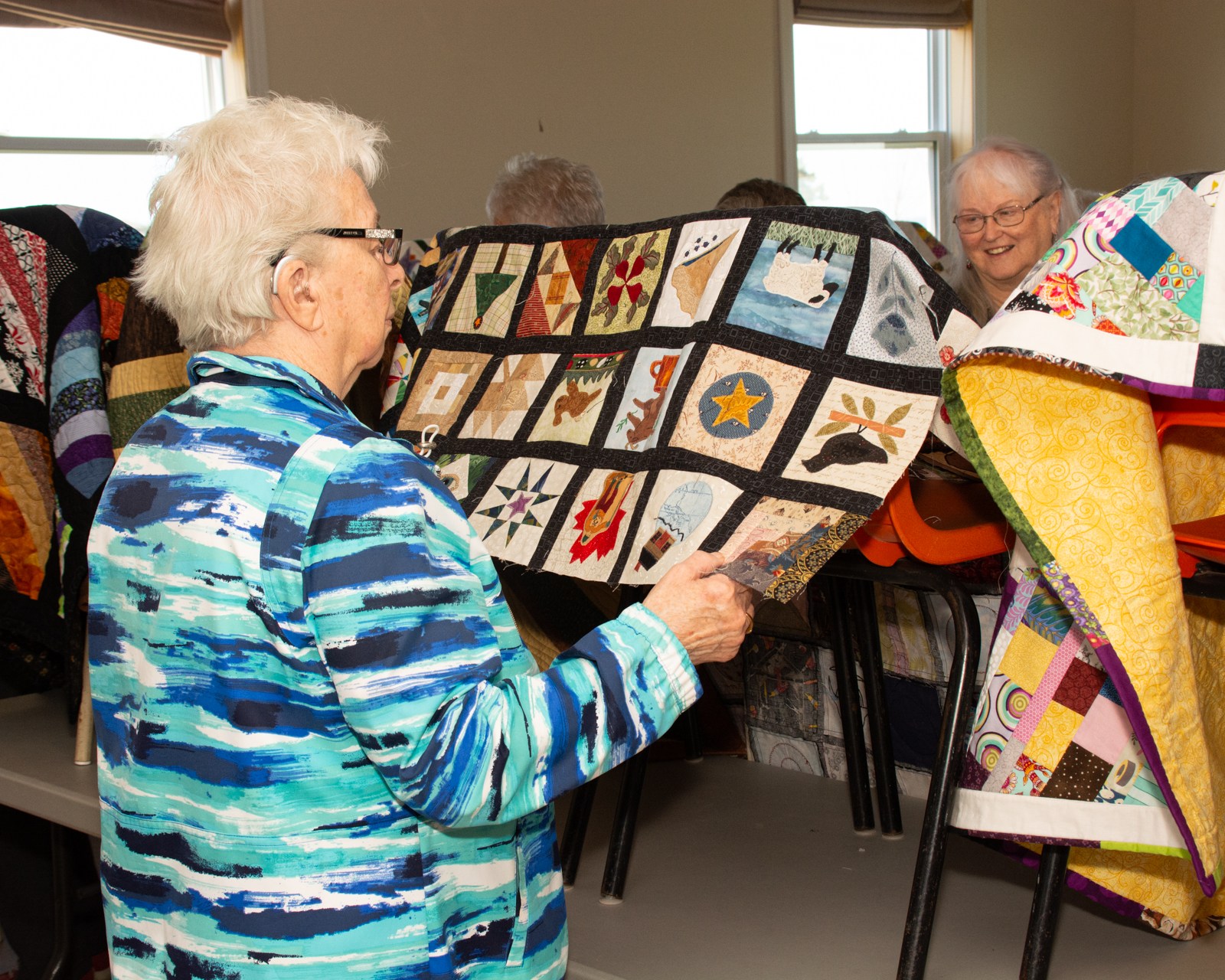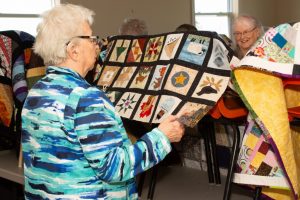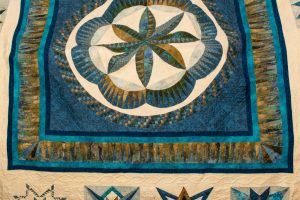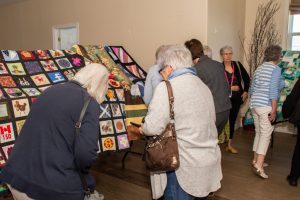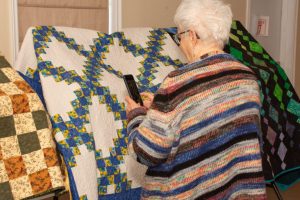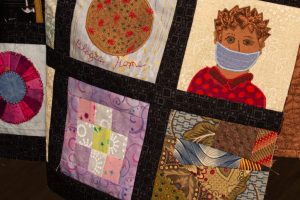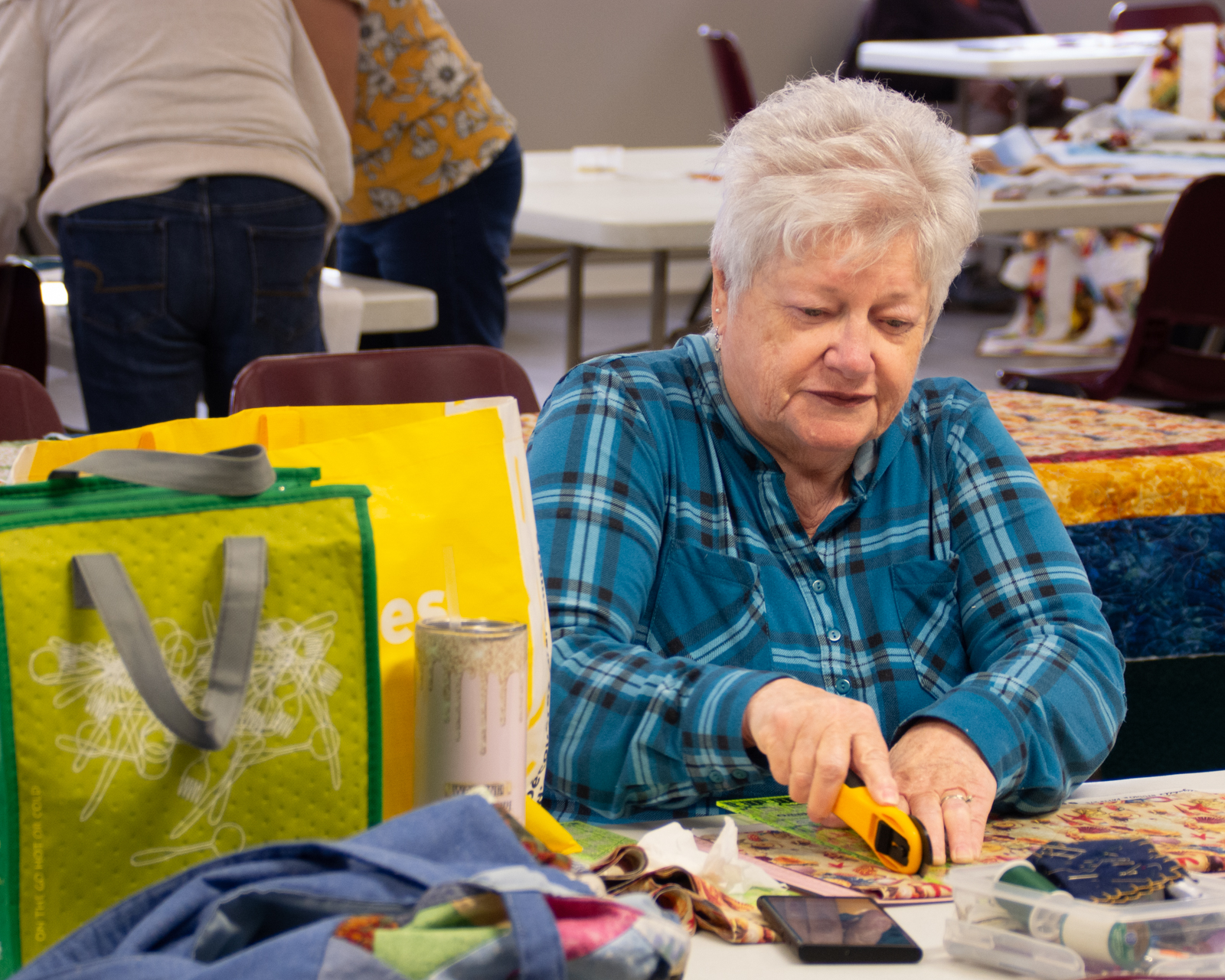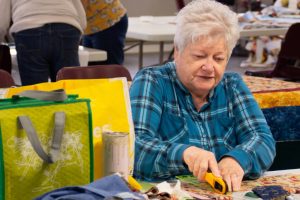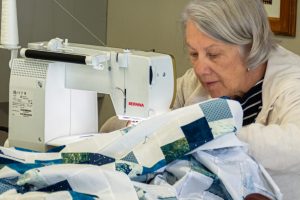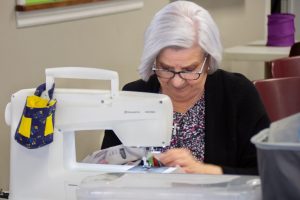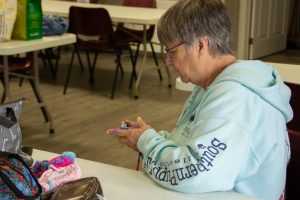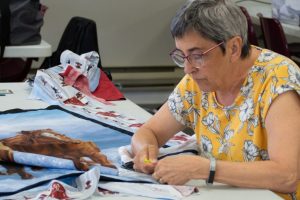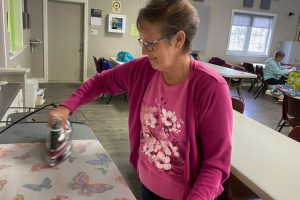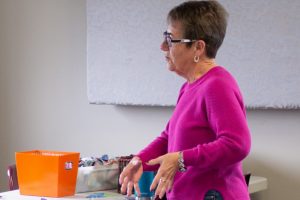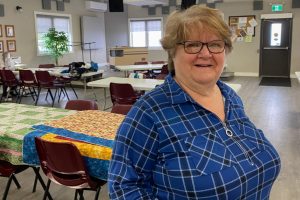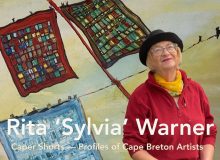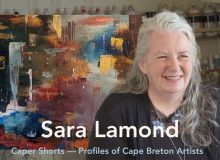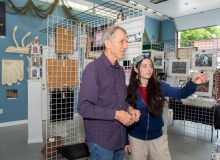Quintessential Quilts
Stitching Community Together
The oceanside parking lot was full to bursting, cars sparkling in the bright spring sunshine of late May at the Acadiaville Community Hall in West Arichat. The Ocean Waves Quilt Society meeting being held there attracted over 70 participants, no small feat because Cape Breton Island is a large area with a small population. Founded in 2000, Ocean Waves has grown rapidly with chapters in small communities around the island plus Antigonish and Havre Boucher on the mainland.
Enthusiastic quilters attended from as far away as Glace Bay and Cheticamp to display their quilts, swap info about techniques and materials, discuss best charities to donate to, chat, laugh and eat. Quilting is obviously an activity that connects women deeply. The room buzzed with excited conversations, and the aroma of the home cooked lunch filled the air as treasurer and event organizer Colleen DeWolfe began her presentation on crumb quilts.
A gallery of images from the event The display was a wonderful cross section of the world of quilting
Follow the crumbs
Crumb quilts are made from fabric scraps, some as small as the tip of your thumb. Colleen is adamant about sustainability and promoting crumb quilts is her mission. “Just don’t send it to the landfill, that’s my message for the day.” Crumb quilts are made by sewing together scraps randomly and then attaching them to a square. The squares are then joined with strips between them to make colourful and dynamic designs. The back can be made from repurposed material including old sheets. She encouraged the gathered quilters to “sew with friends, share scraps, anything and everything.”

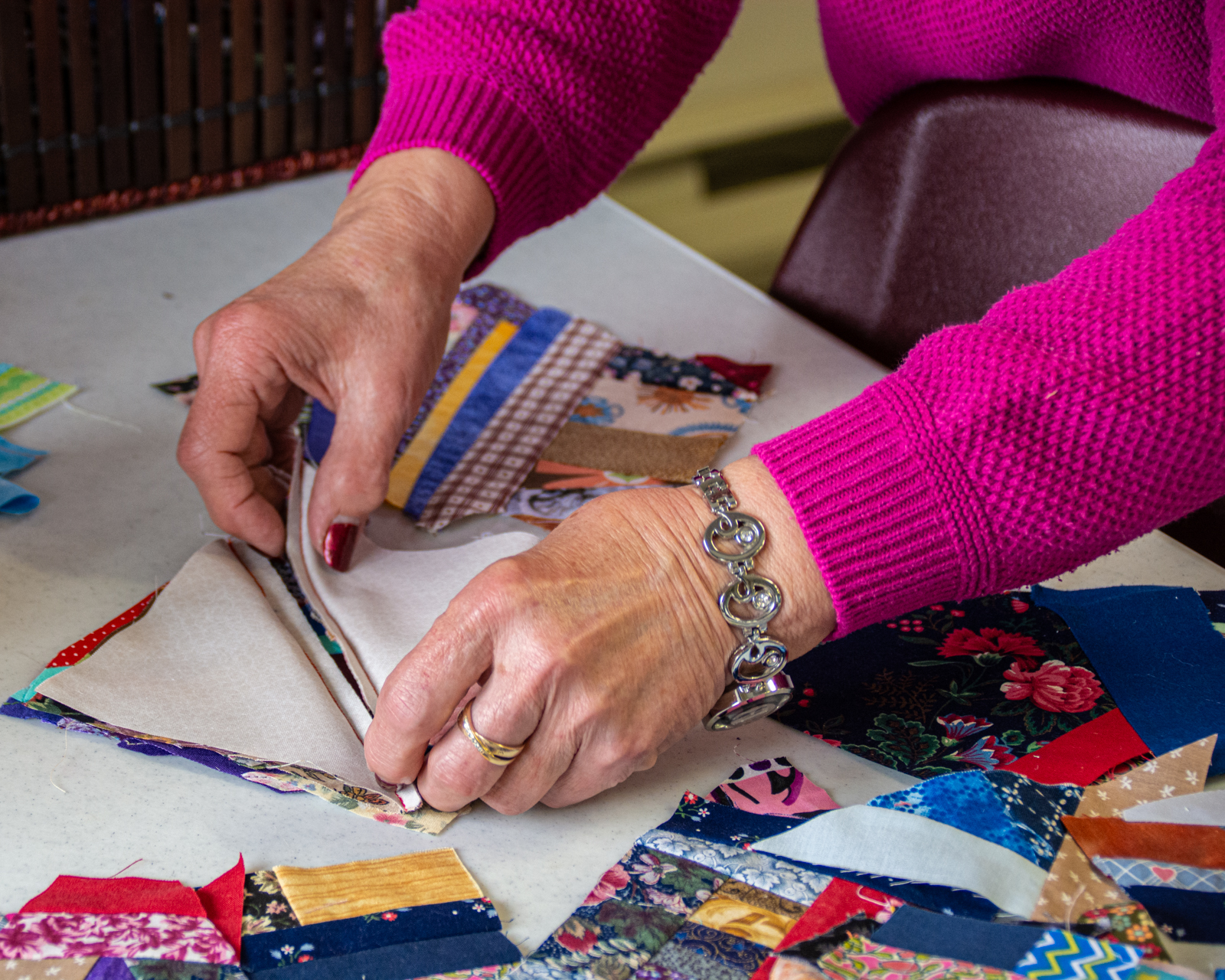
Quilting comes from a culture of frugality — making bedding from old clothes and other fabrics. It’s the original reduce, reuse, recycle ethic. Traditional Acadian quilts, for example, were made with worn clothes and linens joined together with embroidery stitching.
And crumb quilts are the epitome of this waste nothing ethic. With current environmental concerns the practice is even more relevant since some fabric takes up to 200 years to decompose; plus the manufacture of textiles uses a lot of natural resources like water and fossil fuels.
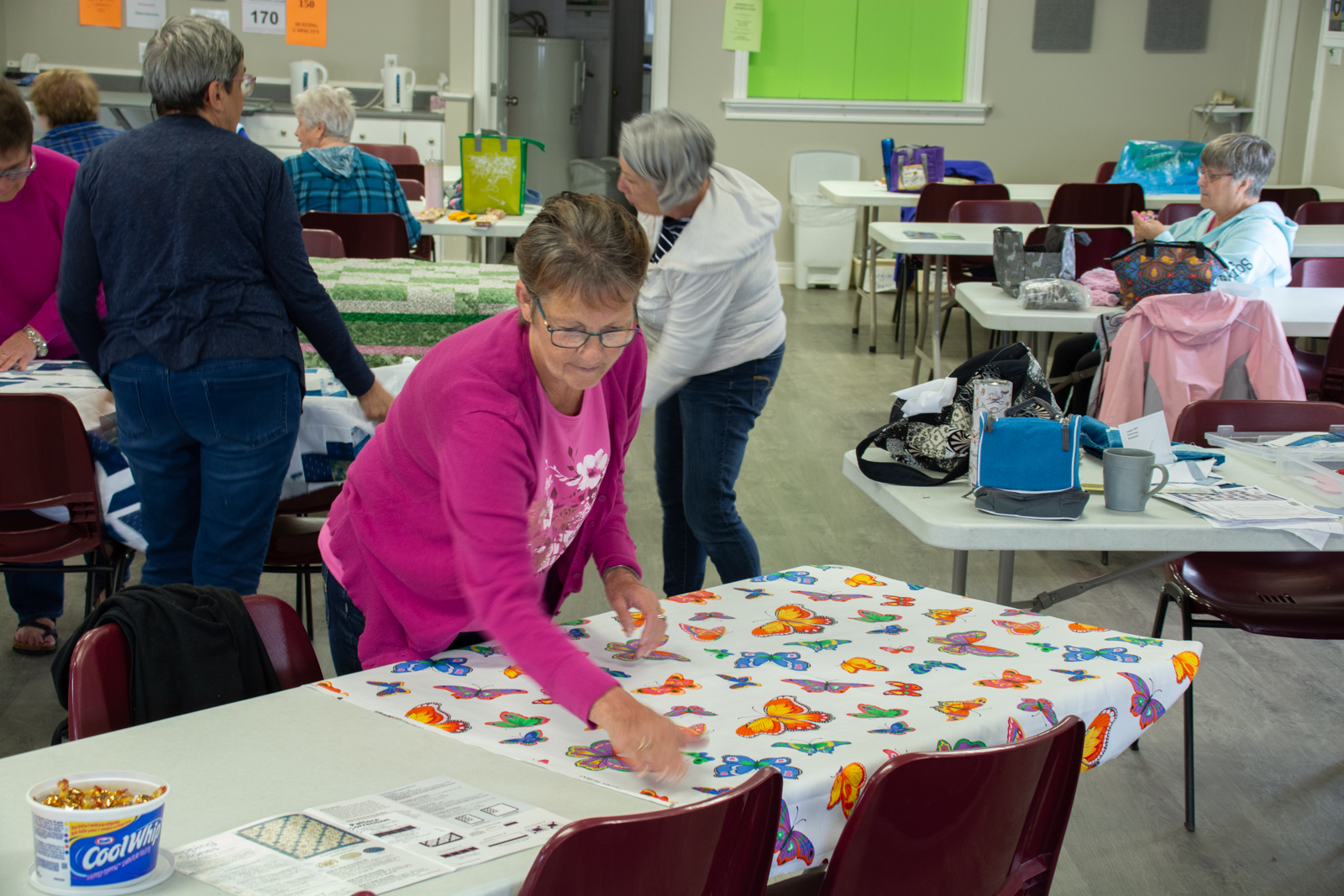
But why do women quilt?
Quilting is an outlet for creativity, specifically the creativity of women, and the vast majority of quilters are women. Colleen explained about her local group, The Busy Bees: “It all started for the warmth and, mainly, at this point, to keep busy. They enjoy sewing, they enjoy making quilts, making them as heritage pieces as well as comfort pieces for families. Often they’re saying, ‘I want to leave something behind. Make sure my children have a quilt that I made and tell some stories.’”
However, quilting is more than just sewing together scraps of material. It takes mathematical precision and an eye for colour and motif. There are traditional patterns like Attic Window, Jacob’s Ladder and Star of Bethlehem, but some quilters like to invent their own patterns or go free-form and create quilts that look like paintings. And motifs reflecting family and community can add layers of meaning, like with memory or comfort quilts.
Busy Bee Monday followup
We followed up and met with the Busy Bees, that is, the Arichat chapter of Ocean Waves, at their weekly gathering the next Monday at the Isle Madame New Horizons Senior Citizens Club.
The quilters were spread out around the community hall, each on a table working on her own project. Most, if not all, had their machines with them, ready to put in a day’s work.
Their weekly Monday meeting is a time for socializing, for sure, but it’s also a time to give and get feedback, share their expertise or tap into each other’s know-how. Several quilting projects were underway representing various styles and permutations of quilting. Have a look at the accompanying photos to get a sense of how each project was unique

The quilter’s generous heart
Quilters seem to be generous with their talents and time. For example, Eleanor Boudreau was working on a memory quilt for her granddaughter who graduated this year. The quilt included some of her granddaughter’s childhood clothing, banners from her various activities like gymnastics and other memorabilia. Members have also made comfort quilts made from the old clothing of a loved one who has passed away.
That generosity includes their community. These women love to give back. Each year the group makes one quilt to give to charity. Collectively they decide on a pattern, then buy the material. When it’s completed, they all put their names in a hat and the one whose name is drawn gets to pick which charity gets the quilt. Colleen said, “Whatever charity gets it, we tell them they have to fund raise for at least $700 to $1000. That’s the value of the quilt so we tell them that’s how much they should fund raise.” This makes their sewing efforts worthwhile and gives the charity a financial boost. Women’s shelters, disaster relief organizations and veterans have all benefited from the generosity of these quilters.
Quilting technology
The final stage of making a quit involves sewing the top layer, batting layer and bottom layer together either with time consuming hand stitching or with an ordinary sewing machine which can be cumbersome and frustrating. However, technology has revolutionized quilting with the quilting machine, and Colleen bought one.
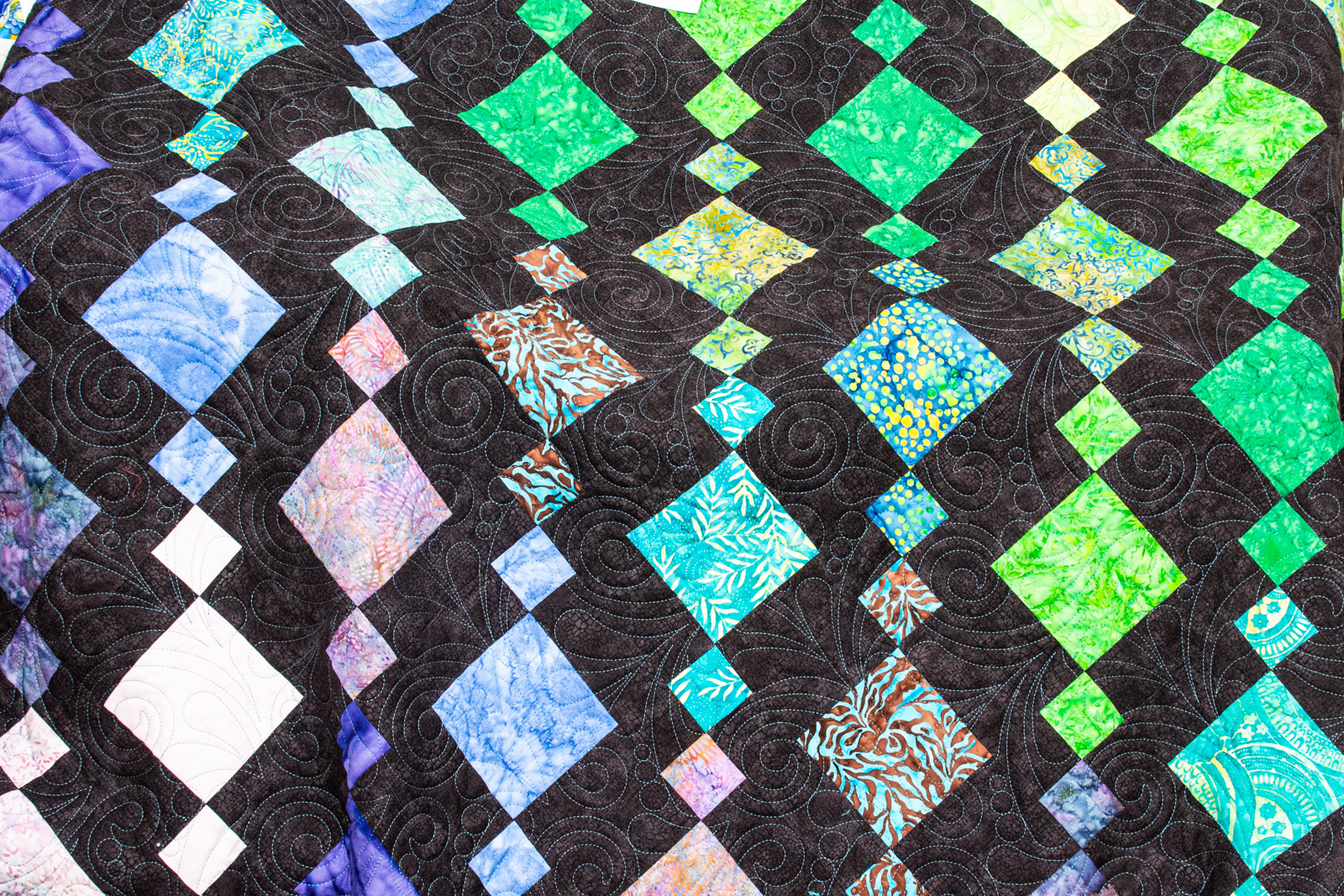
A quilting machine is a species of CNC machine, like a really big Cricut that sews. The machine has a 14 foot bed that moves on rails and can automatically quilt an entire project while the operator is busy doing other sewing projects. Colleen said, “I had a couple of days where I had that one running, my embroidery machine running and actually doing other sewing — my own little factory in my basement.”
A serious investment.
“You’re talking around $35,000,” she said. During COVID, Colleen had the choice to trade in her old car for a new one or invest in her love of quilting. “It’s computerized and you can download digitized designs and figure out what you want to make that suits the quilts.”
Colleen has never looked back after that purchase. She said she sews every day and that “my sewing room is my happy place,” but she wanted to “push her own limits” so purchasing the professional quilting machine seemed like a logical next step, both for her and her quilting community.
Before she bought the machine, anyone who wanted to get their quilt professionally finished had to go to Sydney or Halifax. “I bought a quilter to assist people here on the island in putting quilts together more than anything else, because that was one area where we had no service.”
She offers a quilting service at a minimal price: $75 for edge to edge quilting for a quilt up to 50 inches wide. Customizing a large quilt, 90 inches x 100 inches, can cost $400-$500 and will take 2-3 hours just to set up and 65 hours to complete. She said, “If you’re getting $500 and putting in 65 hours, you’re still not paying yourself a living wage. It’s work that you have to love.”
Quilting has enjoyed a resurgence since the 1960s and has taken a number of different turns and forms. And it’s accessible to anyone who has a supply of fabric — used or new. Colleen summed it all up: “It’s a craft that can evolve, all you need is your imagination. We encourage everybody to start.”
The Busy Bee Quilters At least the ones that were there the Monday we visited.
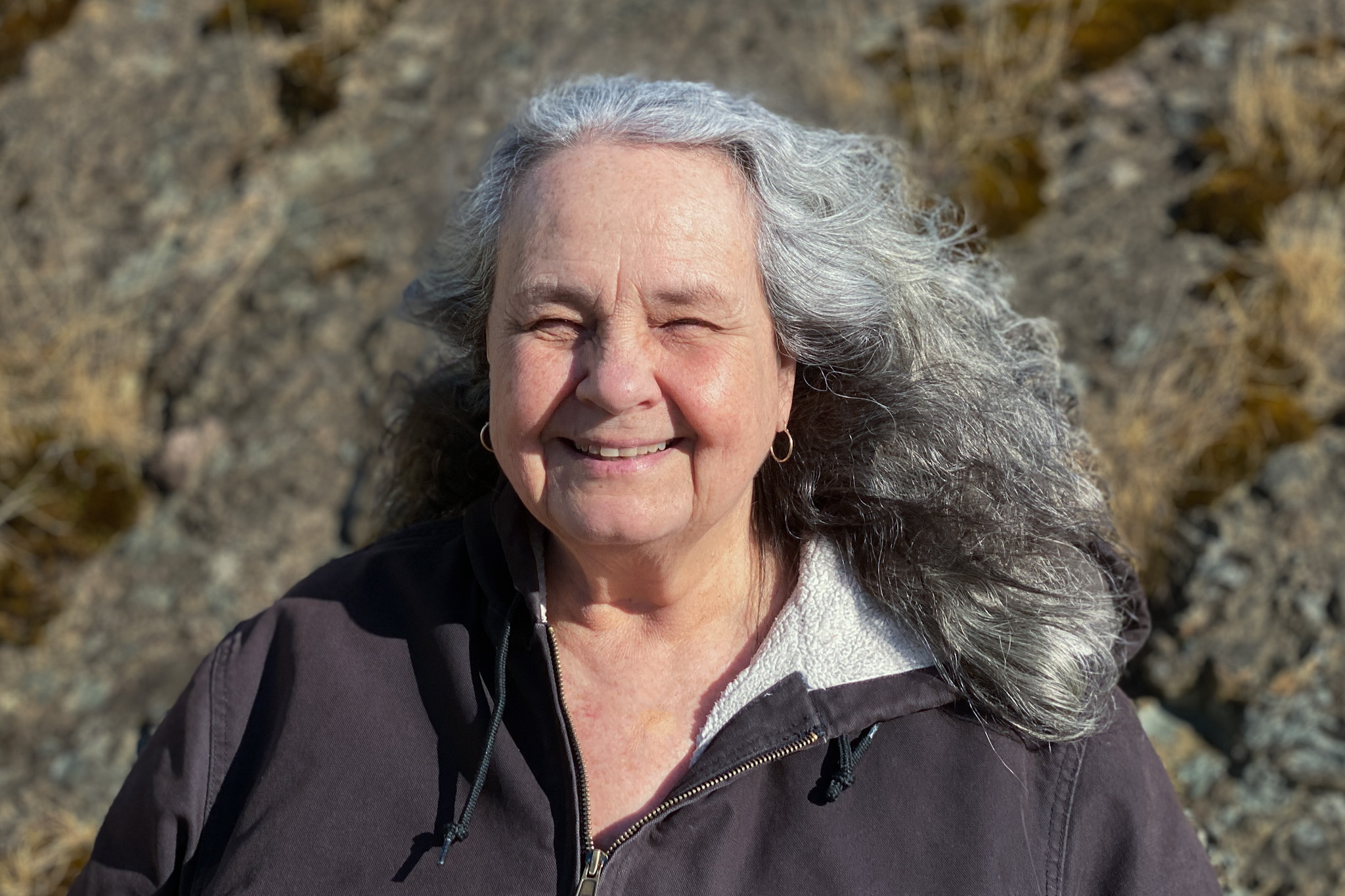
Author details
Elaine Mandrona, in addition to being a writer, is a painter and sculptor. She moved to Cape Breton permanently in 2021.
